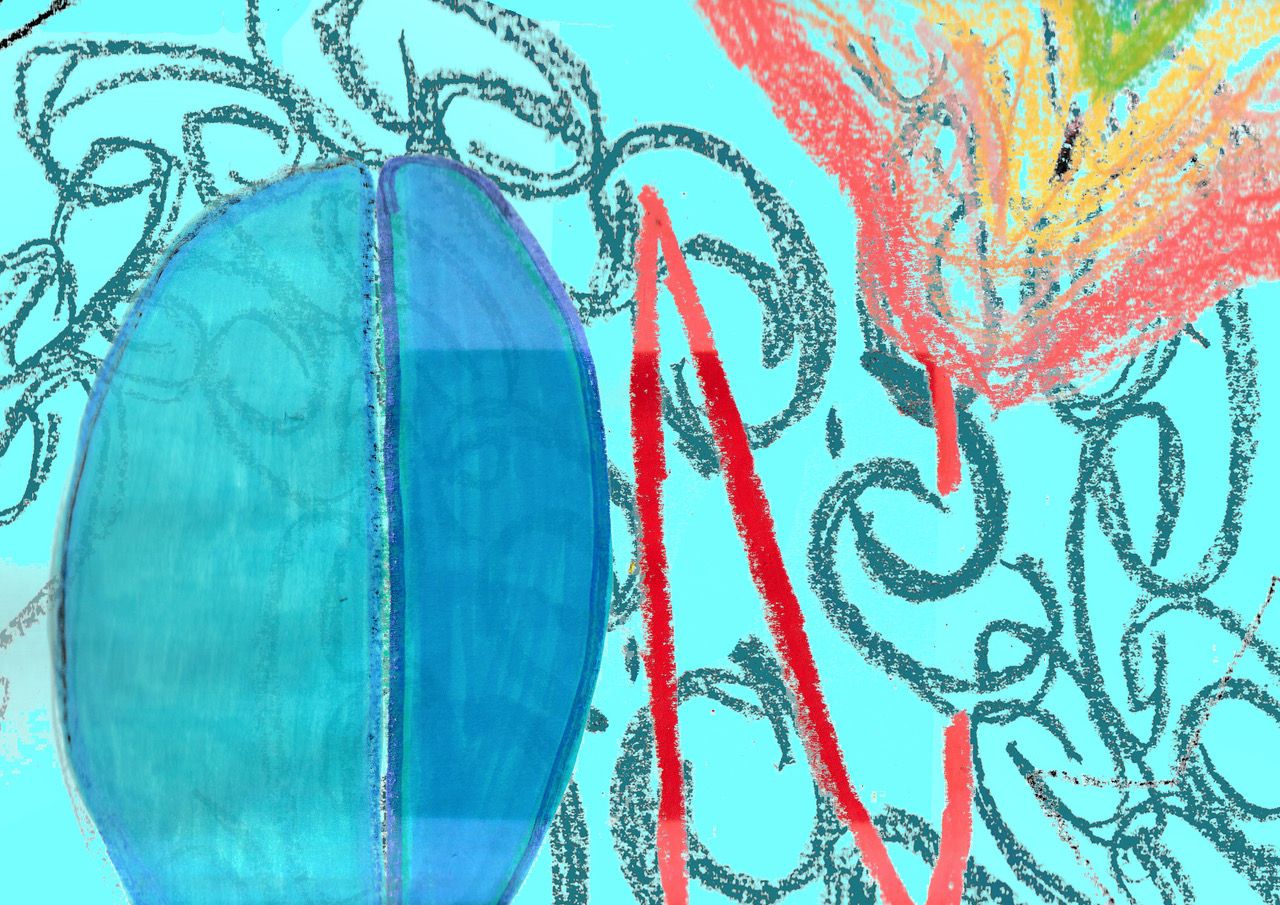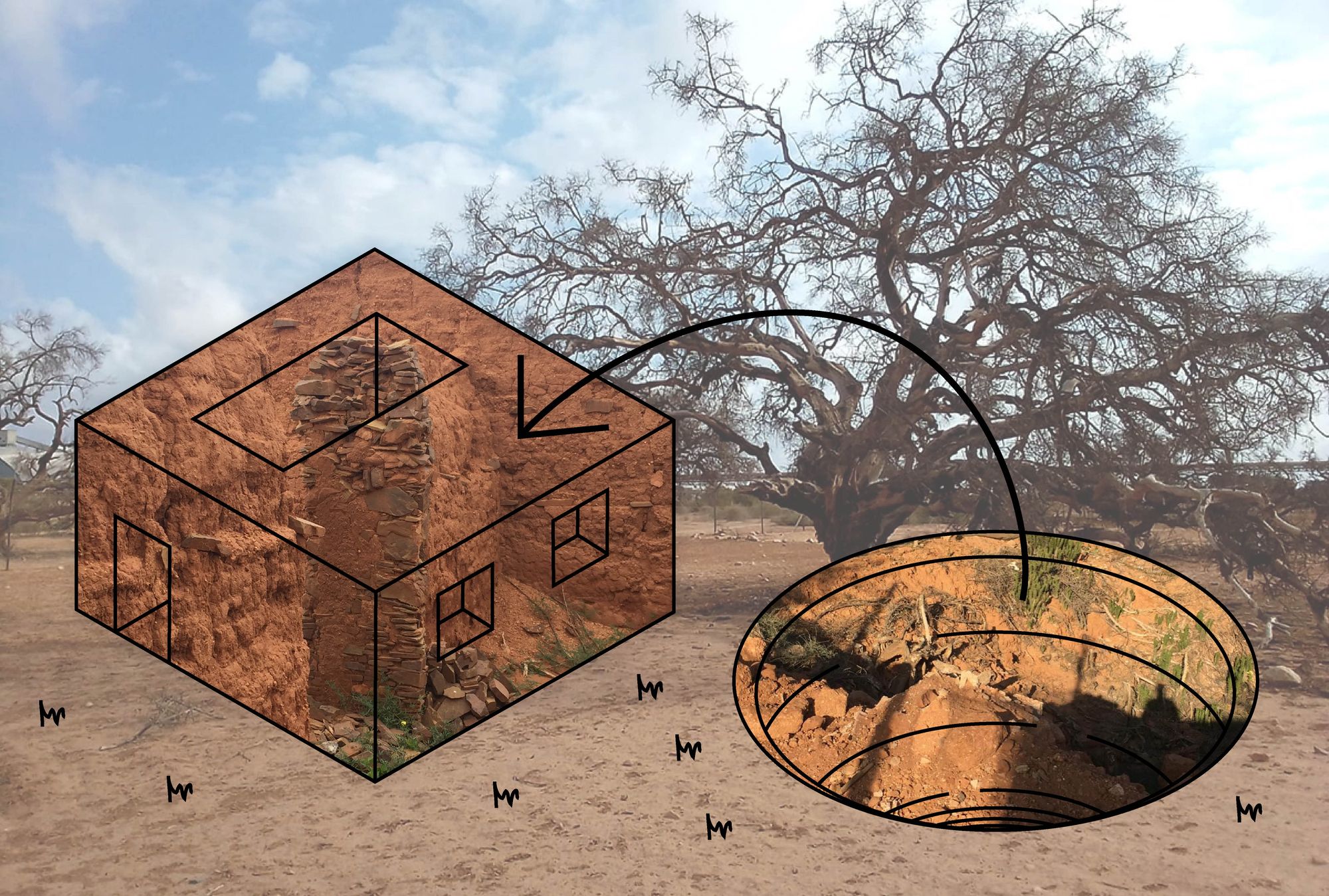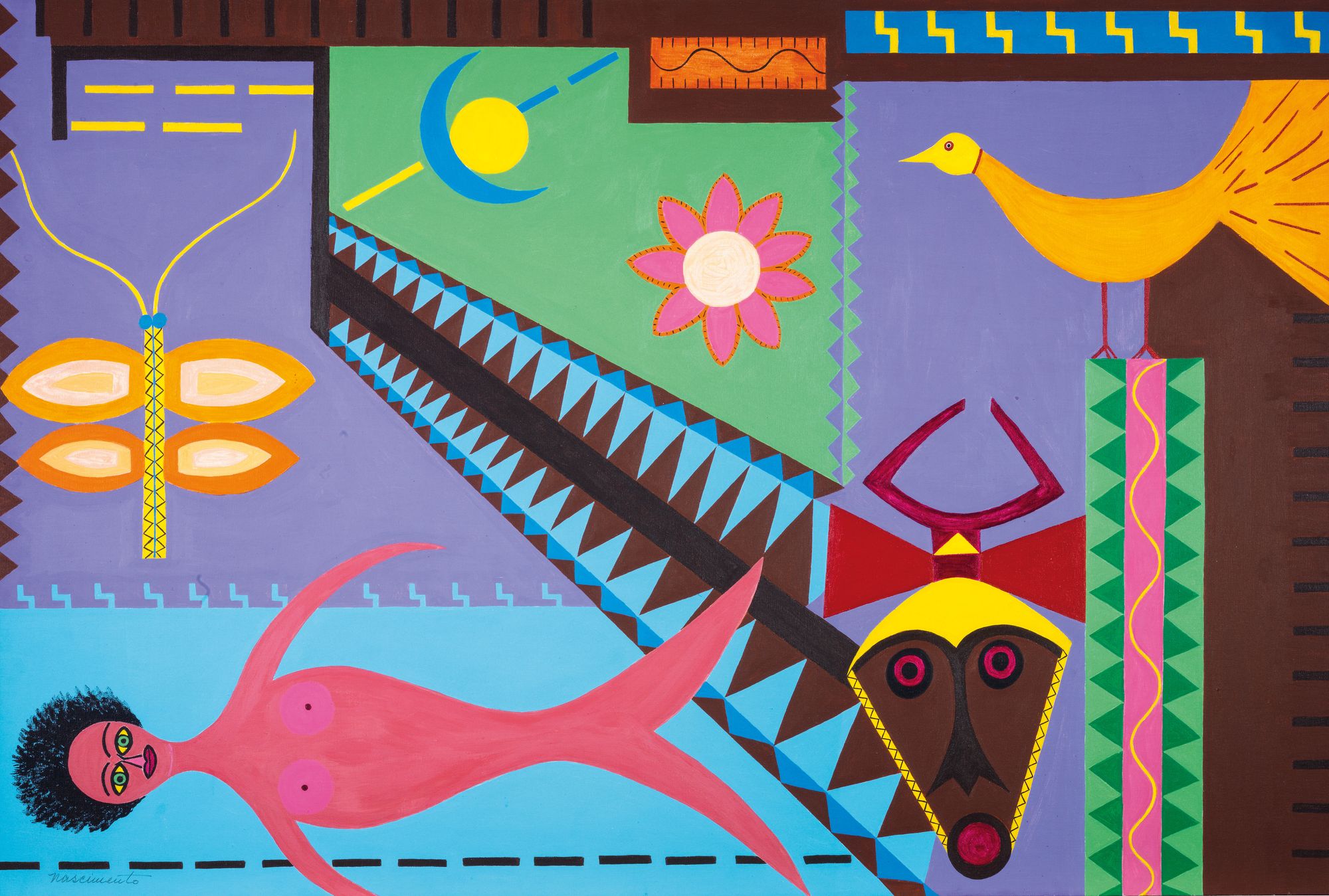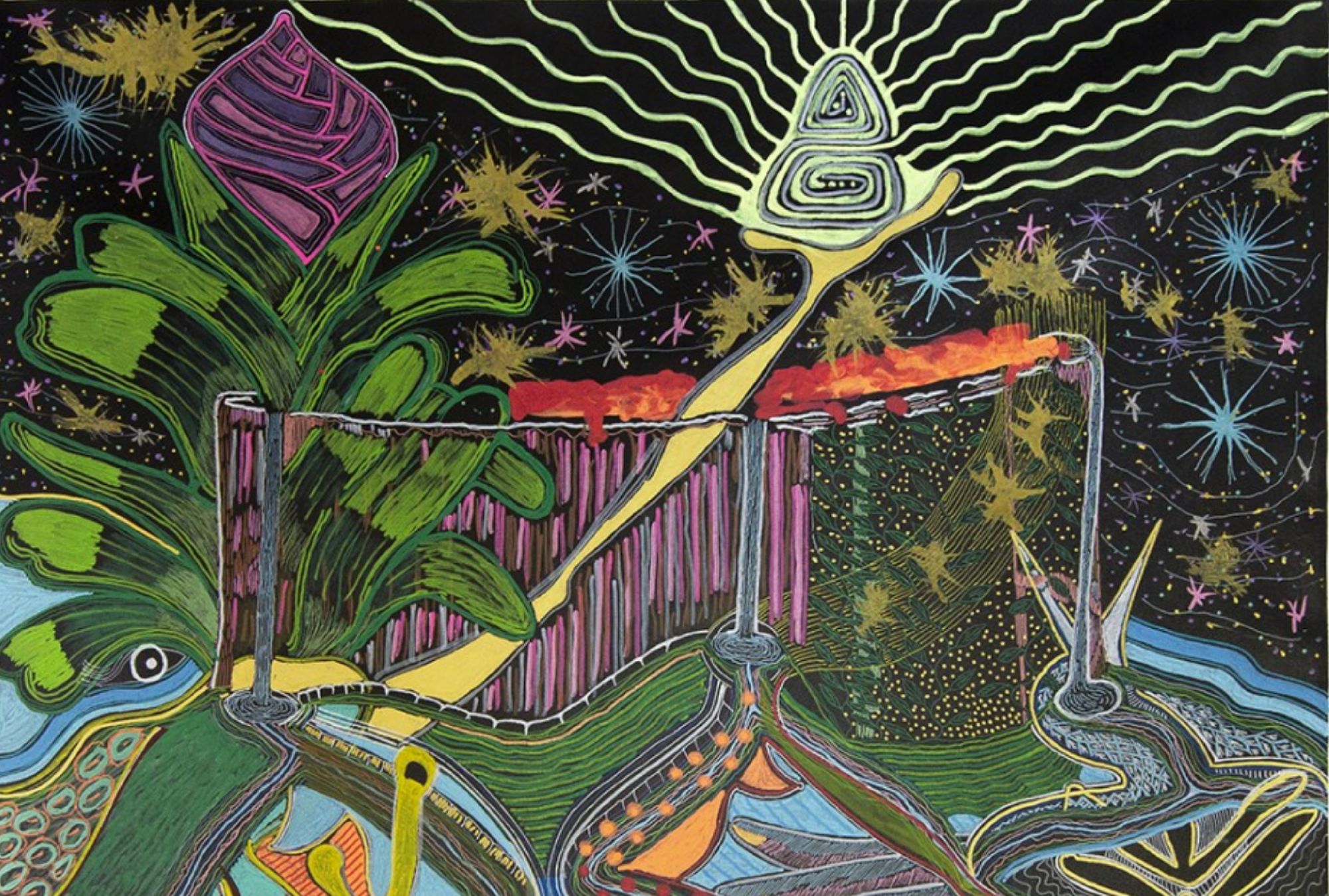
During a recent visit to Småland, I was struck by the many mossy stone walls that make the landscape. The South Swedish highlands are a combination of vibrant green plains and rolling hills of mostly pine or birch forests, covered by scattered quaint red cottages and surrounded by endless numbers of clear-water lakes and rivers. Even when walking through the woodlands, one can see stones piled up in cairns or arranged in drywalls that do not seem to correspond to the current layout of the plots. These are vestiges of ancient field systems and agricultural practices and settlements that date back to the late Bronze Age and early Iron Age. In many cases, the stone walls were built as boundary lines that indicated the ownership or the purpose of a parcel, to create cattle paths, or to integrate individual farms into a common grazing system. These and even older stone traces that refer to similar field and farming systems continue to be found in the whole of central and northern Europe, the British Isles, and parts of North America.
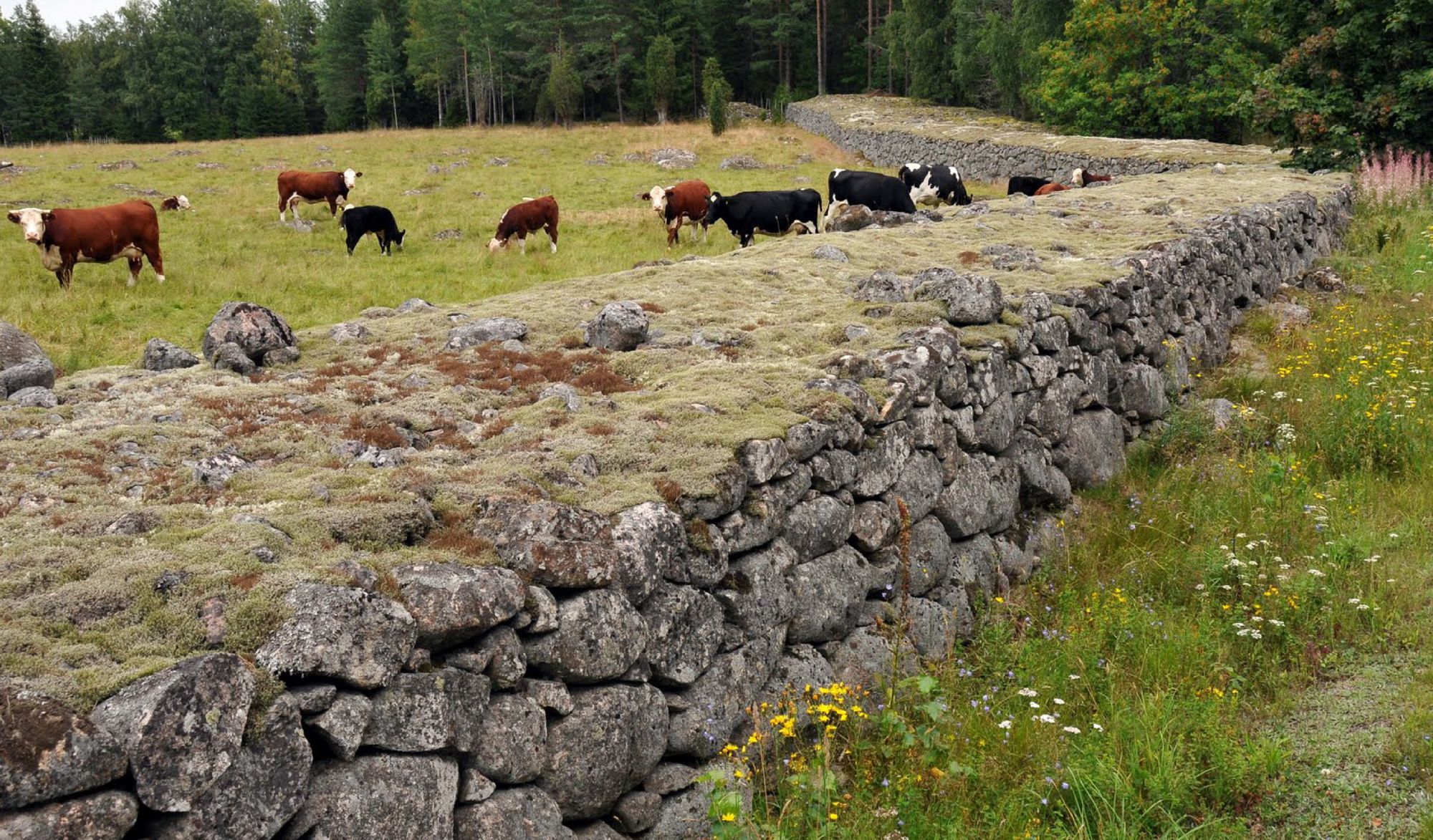
Stone walls are considered an icon of Swedish material culture, and for their people, a symbol of hard work and togetherness. Assembling stones into such monumental structures represents an ongoing centuries-old collective architectural effort that tells the story of the relationship between farmers and their changing environment. Maja Söderberg, a cookbook author and sustainable agriculture writer who co-runs a cooperative farm in Småland, mentioned to me that every spring, before sowing or planting, farmers first need to clear the soil from stones that were not there the year before. Every year. But where do these new stones come from, again and again?
Actually, these stones have always been there, hiding deep in the ground out of human sight. Each year, stones surface because of a seasonal phenomenon called “frost heave” that occurs wherever temperatures drop below freezing and soils are moist. Every winter, the water in the soil changes into solid crystals of ice. Because water expands as it freezes, it squeezes the soil from all directions, which in turn gradually pushes the stones upwards and out of the surface. When spring comes, farmers need to remove them to prepare the soil for cultivation. In small fields, this is a manual, labor-intensive, and communal job. Farmers in Småland traditionally move the stones to the edges of their fields and stack them into stone walls. As this is repeated every year, the new stones are piled on top of the old ones in an ever-growing process. These stones are active and move by virtue of the many interrelations that occur below and above the surface. A symbol of permanence and stillness, stones are assumed to be lifeless. In Småland, however, one can notice that they are in fact full of life.
“A symbol of permanence and stillness, stones are assumed to be lifeless. In Småland, however, one can notice that they are in fact full of life.”
Feminist writer and scholar Sara Ahmed opens her book Willful Subjects with a tale by the Grimm brothers. It tells the story of a child who was left to die as a punishment for disobeying her mother, but when she was buried, her little arm reached up out of the soil. Though they kept putting the arm back in and covering it with soil, it always came out again—that is, until the mother returned to the grave and hit it with a stick. In this story, Ahmed explains, one form of will assumes the right to eliminate the other. The arm’s persistence is seen as an act of disobedience (willfulness) while the mother’s stick is seen as restorative. In this way, Ahmed points out that willfulness has been predominantly understood not as a virtue (a lot of will as determination) but rather, as a negative expression of will (an excess of will as disobedience); the rhetoric is that if you defy authority, you must be corrected. The difference between will and willfulness thus has to do with where power is located; it is “a way of ordering human experience, [a] way of distributing moral worth,” Ahmed indicates—whatever gets in the way of the norm must be eliminated. Still, at the core of Grimm’s story remains the child’s refusal to be kept down—the rising hand of defiance.
“Things are created through relations just as much as things are what enable new relations to emerge and develop. These stone walls are a living cultural tradition that is as much about renewal as it is about the perseverance of conviviality.”
Like the willful child, the Småland stones persist every year in their determination not to stay below ground, and they achieve so through a collective effort of forces. The will to surface, or rather, willfulness, is as much of the stones as it is of the water and the soil. However, Ahmed proposes to think that will is not something that one possesses but something that one experiences. It is not, then, that willfulness is in the stones, but instead, that the water, the soil, and the stones bring willfulness into being. But it is not just about this phenomenon, it is also about what happens after the refusal: the creative potential of being willful. Together with the farmers, the stones make walls. It is not only because of things like stones that people can create something new like a wall, but walls are created with the stones in a kind of socio-natural metabolism between the farmers and their environment mediated by the labor of both the people and nature. In other words, stones and humans are not only interacting, but they mutually constitute each other; their way of existence is created with, and depends on, each other. Things are created through relations just as much as things are what enable new relations to emerge and develop. These stone walls are a living cultural tradition that is as much about renewal as it is about the perseverance of conviviality.
The Stone Does Not Yield
In the field of Berlin’s Tiergarten park, there is a group of spectacular, massive stones weighing about 30 tons each, arranged in the form of a 50m diameter circle. Conceived by German artist Wolfgang Kraker von Schwarzenfeld and funded through a variety of national and international, mostly private companies, the installation is called “The Global Stone Project” and meant to supposedly “combine the world’s energies” as a site for world peace. Between 1997 and 2010 Schwarzenfeld traveled to five different locations around the world to look for 10 pairs of stones that would each represent a continent. One of the stones of each pair would remain in its place of origin, while the other one would be relocated to Berlin.
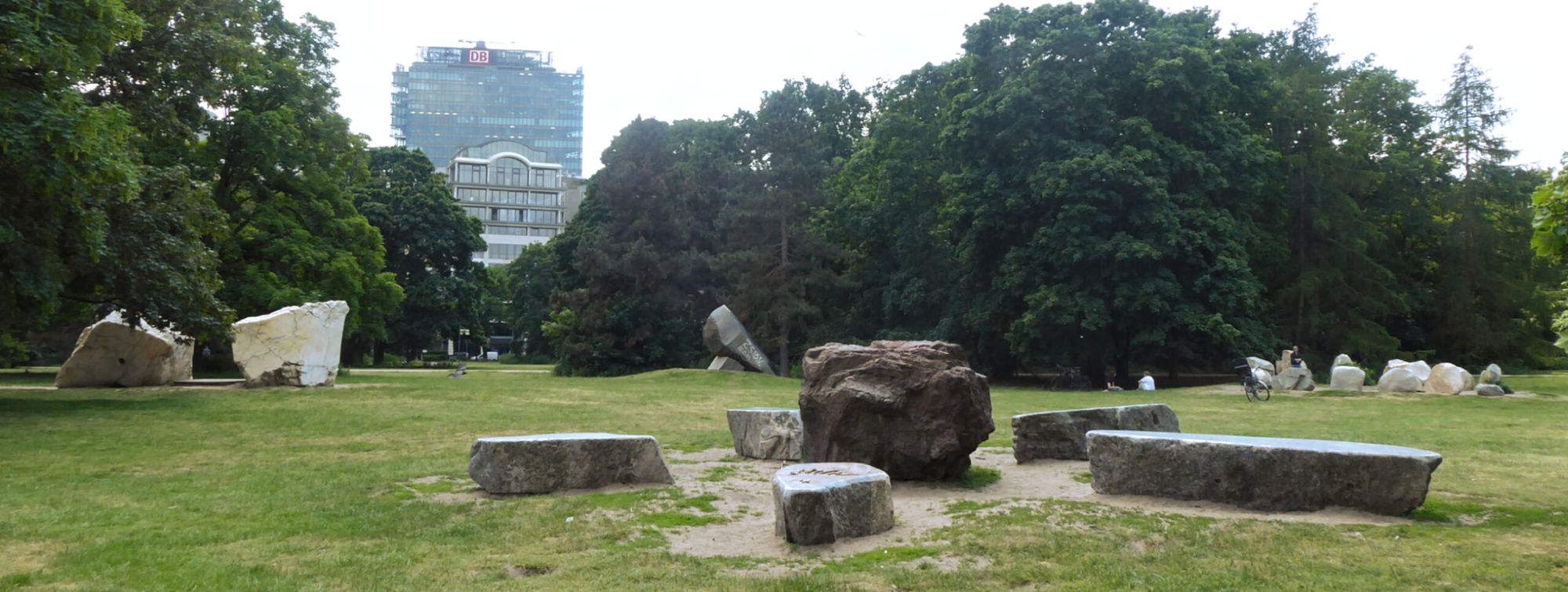
According to Schwarzenfeld, each coupling stands for “the five steps toward peace:” a red Jasper extracted from Venezuela represents the Americas and signifies “love,” a white quartz from Russia represents Europe and signifies “awakening,” a black granite from South Africa represents Africa and signifies “hope,” a banded ironstone from Australia represents Oceania and signifies “peace,” and a gray gneiss from Bhutan represents Asia and signifies “forgiveness” (the association between the words and the continents is not explained by the artist). All of the stones were intervened, cut, polished, and have their assigned names inscribed in many different languages, depending on the stone. The ones that remain in their place of origin are positioned in a way so that, once a year, on the midsummer solstice on June 21, their surfaces reflect the light of the sun back to their “sister” stones in Berlin’s Tiergarten to form, in the words of Schwarzenfeld, “five invisible straight lines” that invite viewers “to participate in the peace process” through the creation of “a circle of light symbolizing the united humanity.”
In 1997, like an old-school colonizer, Schwarzenfeld embarked on a voyage across the Atlantic in his self-made ship Pegasus to make his inaugural haul in the Americas. The first stone was taken from Venezuela's Canaima National Park in the Gran Sabana region, home and land of the Pemón indigenous people of Santa Cruz de Mapaurí, to whom the stone is their Grandmother Kueka and a living constituent of their cultural heritage. The Kueka stone was considered a “donation” from the then-head of the National Parks Institute (who had no legal authority to do so) to Germany with the approval of former Venezuelan President Rafael Caldera’s cabinet in 1998, but without the consent of the Pemón people—ignoring the fact, as well, that the stone was in a territory which was, by then, already declared a protected area. Since then, the Pemón had been demanding that Kueka be brought back to her native land.

According to a story from the Pemón village of Mapaurí (near where Kueka was taken) thousands of years ago, a young Pemón man fell in love with a woman who belonged to the Macuxí people (in present-day Brazil). Because the rules of the Pemón prohibited the union between peoples of different communities, the couple decided to run away. As they walked hand in hand along what is now known as the jasper creek, Macunaimá (their wise Grandfather-god) told them that, as a punishment for disobeying the rules, they would be locked in each other’s arms forever and turned them both into stone. Since then, these two inseparable sacred stones were known as Grandmother and Grandfather Kueka. The Pemón consider themselves descendants of the Kueka stones and were taught by their elders to respect them. They understand that everything in nature has a place and that to ignore it would bring environmental and spiritual imbalance. After Grandmother Kueka was taken, Pemón elders had a vision in their dreams of her crying because she misses her homeland and wants to come back. They see this as nature’s way to claim its right; Grandfather Kueka’s way to call for the return of his partner.
This too is a story of willfulness. First, because the very identity of the Kueka stones is founded on disobedience and rebellion—saying no to the rules of their society which turned the lovers into stones. And then, once again, Kueka becomes willful when she refuses to be part of Schwarzenfeld’s installation. When the elders have visions of the suffering of Grandmother Kueka for being away, her willfulness exceeds the boundary of her own (nonhuman) material body and is distributed among her people who demand her right to return. Willfulness is here as much of the Kueka stone as it of the Pemón people. What is being demanded too is the right of the Pemón to speak for who they are and who they are with—the right to their cosmology.
“[Willfulness] is a reaction to not having been able to choose, only being able to say ‘no’ to that which is being imposed.”
This willfulness emerges as a response to a power that has been imposed on Kueka and the Pemón without their consent. Willfulness is not a possibility that stems from a choice but a resort to turn to after and precisely because the possibility of choice did not exist in the first place. It is a reaction to not having been able to choose, only being able to say “no” to that which is being imposed. Schwarzenfeld was able to “legally” extract the Kueka stone as a “donation” because he had all the “necessary” permits, even though they were obtained as a result of several irregularities in the procurement process. Here, the permits act as an embodiment of Schwarzenfeld’s will and have the capacity to render the will of the Pemón into willfulness, because the will that is considered valid is the one on the paper, not the will of the stone or of those who can speak for the stone.
“The objectification of Kueka acts as an instrument of power that not only legitimizes her extraction but simultaneously dehumanizes the Pemón through the denial of their ontology, their knowledge, and their history.”
For Schwarzenfeld, the stone is an object ready to be transformed and re-signified, while for the Pemón, Kueka is a sacred being whose displacement can have catastrophic consequences. Here, one conceptualization of nature and one way of relating to the Kueka stone prevailed above the other. The objectification of Kueka acts as an instrument of power that not only legitimizes her extraction but simultaneously dehumanizes the Pemón through the denial of their ontology, their knowledge, and their history; material domination ensures cultural domination. This mechanism of power can be understood as cultural colonialism, a process by which the universal imposition of a type of cultural expression, with its set of operations and values, negates others through their appropriation and reinterpretation, while emptying them of their original meaning so that they can respond to the new, over-imposed narrative.
At the site of the installation in Berlin, there is no explanation of what each of the stones mean to their native culture or their relation to their land of origin. In “Culture, no context,” Trinbagonian designer and researcher Cherry-Ann Davis explains that decontextualization is a politics of display and a necessary maneuver to hide the many violations that occurred to obtain an “artifact” whilst turning it into a blank canvas ready to assimilate new meaning and relevance. The reverential value given to the Kueka stone in Schwarzenfeld’s installation (“love” as a step for “global peace”) is purely performative: it is in fact a vision of peace whose necessary condition is, paradoxically, the hijacking of nature. How can such violence be a way of peace? What is actually being revered is not Kueka, love, or peace, but the capacity of a European man to dominate and appropriate not only nature but also the identity of the peoples whose cultural expressions and heritage were taken.
The Stone Returns
After seven years of protests from the Pemón to the Venezuelan Congress and the German embassy, in 2006, the Kueka stone was declared a “national cultural heritage.” This allowed legal action to be taken and the Venezuelan prosecutor’s office to reconsider the donation as a “smuggling offense,” which was followed, in 2010, by an official request from the Venezuelan Foreign Ministry to the German government to “repatriate” the stone. At last, after 22 years of national and international diplomatic legal wrangling, in April 2020, Grandmother Kueka returned to her homeland.
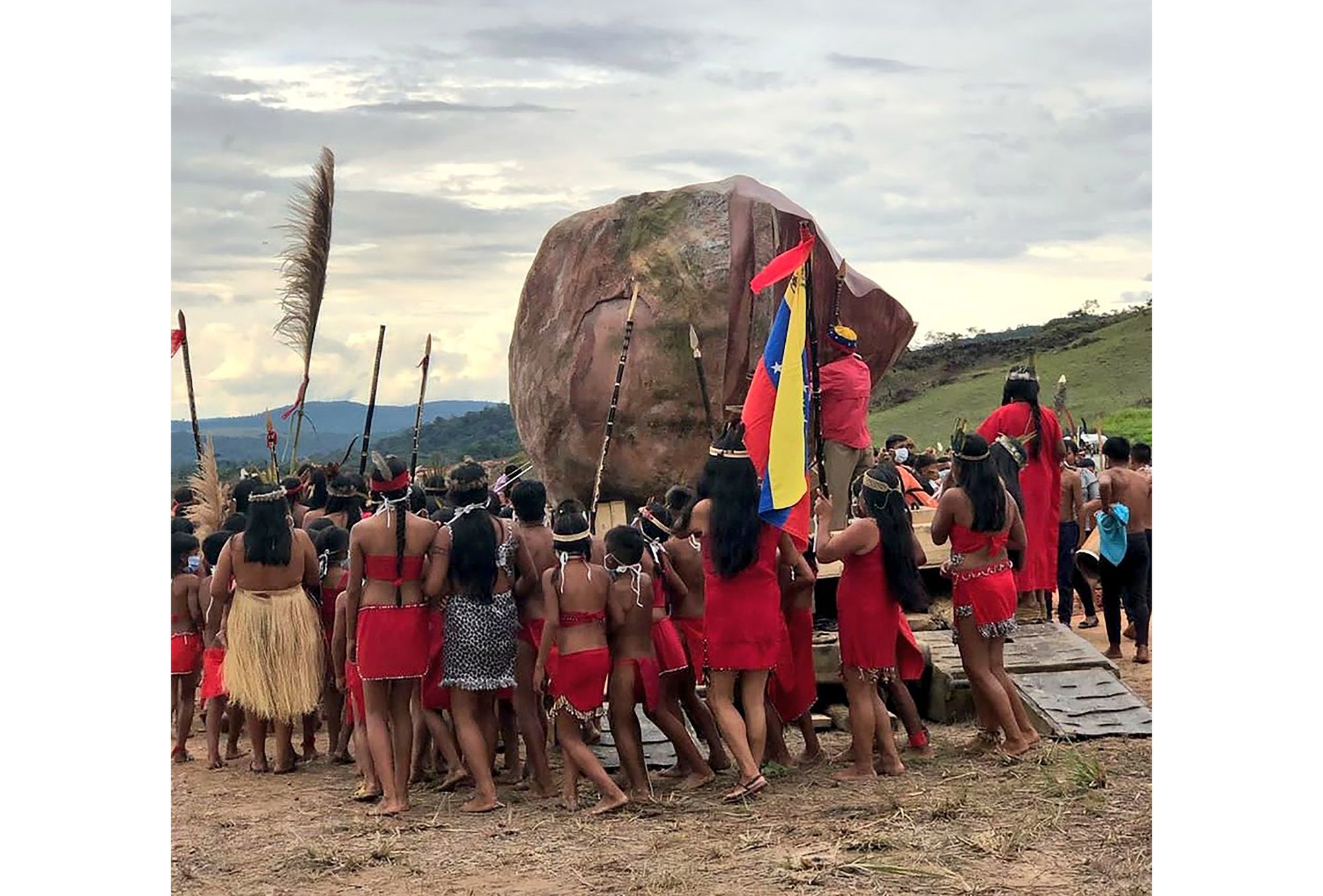
For the Venezuelan State, this is about the return of a cultural asset of national interest, while for the Pemón, it is about the return of a part of them. However, the stone as Grandmother Kueka was not in itself sufficient for the request to be granted; it had to be framed within the parameters of legality defined by the nation-state, based on the assumption of separability between humans and nonhumans and thus articulated in the language of property. In this framework, the stone is defined by whom it belongs to, not in terms of continuity and relationality (what the stone is with). In other words, what for the Pemón is, for the categories under which the State operates is not.
In a recent conversation, anthropologists Marisol de la Cadena and Arturo Escobar discuss the idea of “pluriversal contact zones.” The pluriverse is a vision of a world where many ways of being and making sense of our reality coexist—as spoken by the Zapatistas, it is a world where many worlds fit (“Un mundo donde quepan muchos mundos”). These worlds are not separate worlds, but together they form an entanglement of worlds. Pluriversal contact zones emerge in conflicts pertaining to the destruction and defense of nature when these are understood as ontological conflicts (what nature is) and when there is a rapprochement of those different worlds that are entangled in the conflict. Confronted with the capture of the Kueka stone, the Venezuelan government and the Pemón joined forces against the German State. Echoing de la Cadena’s train of thought and vocabulary, there is a shared interest among two worlds (to bring back the Kueka stone) which is not the same interest (Kueka is a stone-person for the Pemón, and it is a cultural good for the State). To the Pemón, the restitution of the Kueka constitutes an interruption of the ontological separation between humans and nature and between nature and culture that was imposed by modernity and is ongoing. In this sense, a legal discussion about what something is and the political practice it brings about, can be a pluriversal contact zone that attends to the reconstitution of life in a relational way—even if not understood by all parties (worlds) as such.
De la Cadena argues that conversations across divergence can produce new vocabularies, such as “the rights or nature” or “terricidio.” She explains that these new terms do not aim to displace other grammars but to add to them, and consequently they can bring awareness of the many entities that are and that are being destroyed. But even when alliances between contradicting worldings occur to defend a shared interest, like the return of the Kueka stone, these are not always without replicating the modern logic that made the situation possible in the first place. Pluriversal contact zones do not come without risk. As explained by Escobar, “every time that we extend modern concepts to worlds that do not abide completely by those modern concepts, there is a colonization of those worlds as well,” even if it makes possible other dynamics that satisfy all the participants in the alliance. Therefore, he argues, we must try to prevent the instrumentalisation that arises from approaching the pluriverse only from an ontology of separation, as difficult as it may be to overcome this default habit, considering that the modern world is designed on that conception of reality. How to open up multiple possibilities while avoiding the destruction of worlds?
“De la Cadena proposes ‘not only’ as a practice and a strategy to acknowledge both the multiplicity and the limits of description and translation between worlds.”
To escape this supposedly paradoxical situation, de la Cadena proposes “not only” as a practice and a strategy to acknowledge both the multiplicity and the limits of description and translation between worlds. Thinking through this formula, she explains, comes from many conversations with her friend and collaborator Mariano Turpo, a Quechua speaker, who “would insist that what to [her] was for example, a mountain, was not only that. And it was possible that [she] could eventually not know what it not only was!” Thinking with de la Cadena, the Kueka stone is a Grandmother and a stone, but it is neither a stone or a grandmother “as we know” stone and grandmother to be. Grandmother Kueka cannot be understood through geology, so here we have an epistemic limitation that establishes ontological limits.
Not only signals a complex phenomenon (Grandmother Kueka) that exceeds that which any modern description tries to point at whilst enabling what de la Cadena calls “onto-epistemic openings.” What she means by this is that “anything (events, relations, practices, entities) might be other than what it also is.” Her intent with not only is to slow down our practice of knowing and “to challenge what we know, the ways we know it, and even suggest the impossibility of our knowing—without such impossibility canceling the emergence” of being. In that sense, not only is also a willful practice because it refuses the negation of being and attends to that which is beyond the limits of modern knowledge and perception. And so, Kueka is a stone-person, is in continuity with her people, is a Grandmother, is a stone but not only.
Franca López Barbera (she/her) is an Argentinian designer and researcher based in Berlin. Her work explores the intersection between nature, coloniality, gender, and ethics. She is currently a PhD candidate at the Institute of History and Theory of Architecture, University of Braunschweig where she examines the introduction of consent in design-nature relationalities against extractive regimes. Prior to this, she studied Industrial Design at the University of Buenos Aires and did a Master of Science in Design Research at the Bauhaus in Dessau. Franca has experience in several forms of design, working with various design practices, art studios, non-profits, and academic institutions. In 2021, she curated Monte Abierto, the Argentinian pavilion for the London Design Biennale.
Title image: Jaider Esbell
Makunaimî devolve a Muirakitã ao centro da terra, 2019
Acrylic on canvas, 90 x 90 cm
Courtesy of Jaider Esbell Gallery of Contemporary Indigenous Art
© Jaider Esbell Estate


